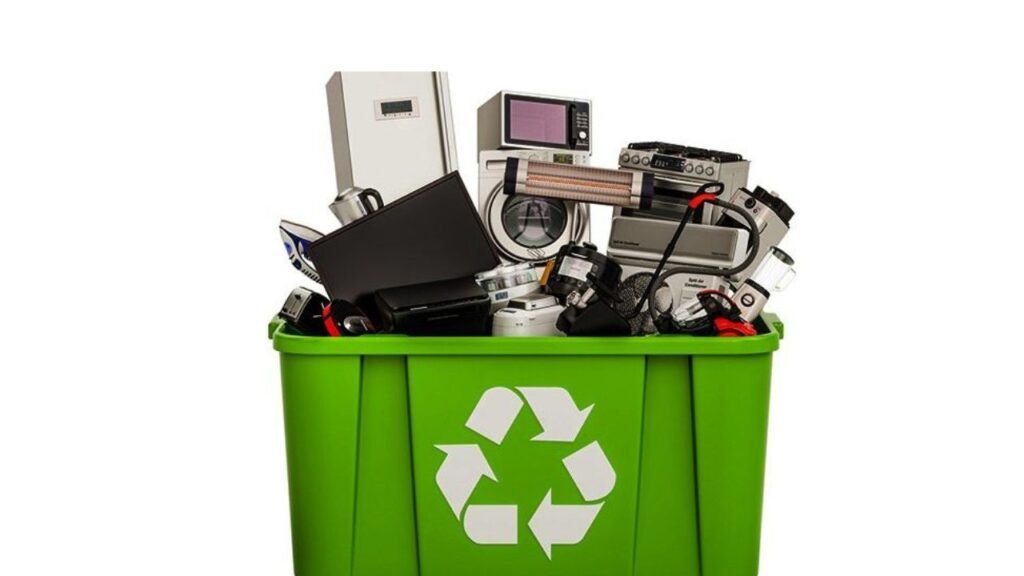India’s electronic waste recycling is gaining momentum amid a Rs 1,500 crore government initiative aimed at recovering critical minerals like lithium, cobalt, and nickel. This ambitious drive to boost electronic waste recycling capacity countrywide prioritizes sustainable resource recovery, reducing India’s dependence on imports of scarce minerals vital for electric vehicles, clean energy, and high-tech industries. The electronic waste recycling sector holds promise for environmental benefits and considerable economic opportunities, underpinning India’s strategic move toward a circular economy.
Rising Electronic Waste and Policy Response
India generated nearly 1.75 million tonnes of electronic waste in the financial year 2023–24, marking a 73% increase over five years. The country’s rapid digitization, surging electronic device consumption, and shortening device lifecycles have caused a sharp rise in e-waste volumes. Close to 60 kilotonnes of spent lithium-ion batteries are included in this waste stream annually. Despite this, a significant portion of recycling happens informally, often in unregulated workshops. However, the formal e-waste recycling rate in India has jumped around 240% between 2019 and 2024, now exceeding 40%, nearly on par with rates seen in many developed economies.
To catalyse further growth in electronic waste recycling, India’s Union Cabinet approved a robust Rs 1,500 crore incentive scheme in September 2025 under the National Critical Mineral Mission. The scheme promotes sustainable extraction of critical minerals from electronic waste domestically rather than exporting materials for external processing.
Incentive Scheme: How It Works
The Rs 1,500 crore electronic waste recycling scheme offers financial support for recyclers engaged in mineral recovery from e-waste, lithium-ion batteries, and catalytic converters from end-of-life vehicles. The government caps incentives at Rs 50 crore for large operations and Rs 25 crore for smaller recyclers to encourage widespread participation.
The National Critical Mineral Mission guidelines, issued in early October 2025, stipulate incentives for recyclers actively extracting lithium, cobalt, and nickel metals within India. The scheme also reinforces formalization under the Extended Producer Responsibility (EPR) framework, requiring electronics producers to manage end-of-life collection and recycling initiatives. The aim is to build an organized, efficient recycling ecosystem that fosters transparency and environmental safety.
Environmental and Economic Importance
Electronic waste recycling plays a critical role in addressing the environmental damage caused by improper e-waste disposal, which often contaminates soil and water through hazardous substances. Extracting critical minerals through recycling reduces the environmental footprint compared to traditional mining. Furthermore, reclaiming metals like lithium and cobalt domestically helps secure supply chains vital for India’s clean energy ambitions, such as electric vehicles and renewable power infrastructure.
Economically, expanding electronic waste recycling creates jobs across collection, dismantling, and refining operations. It fosters industry innovation in developing advanced recycling technologies like hydrometallurgy—capable of efficiently recovering metals from complex waste mixtures. Research institutions such as IITs and CSIR are collaborating with the government to provide expertise and facilitate skill development in the sector.
Strengthening Industry Collaboration and Capacity
The Ministry of Mines actively coordinates with private sector companies, dismantlers, crushers, and shredders to integrate electronic waste recycling processes under formal frameworks. Recognising the fragmented nature of existing supply chains, this initiative encourages stakeholders to formalize operations to increase mineral recovery rates and ensure compliance with environmental standards.
With the removal of customs duties on lithium-ion battery scrap in the 2025-26 Union Budget, imported feedstock processing opportunities have expanded. This policy shift further incentivizes growth in India’s recycling capacity, encouraging investment in modern recycling infrastructure across the country.
Looking Ahead: Scaling Sustainable Recycling
India’s electronic waste recycling market, valued at approximately USD 1.6 billion in 2024, is projected to grow to USD 2.8 billion by 2033, reflecting a compound annual growth rate (CAGR) of 6.6%. This growth hinges on supportive government policies, technological advancements, and growing consumer and industrial awareness of environmental sustainability.
The government’s Rs 1,500 crore scheme aims to accelerate this trajectory by providing financial backing to formal recyclers and improving supply chains under the EPR system. Over the next five years, India expects significant capacity additions in recycling plants and higher recovery of critical minerals vital for its industrial and clean energy future.
Bharat Taxi Launch: India’s New Cooperative Cab Revolution Takes on Ola and Uber
Highlights:
-
India generates 1.75 million tonnes of electronic waste annually, with 60 kilotonnes of spent lithium-ion batteries.
-
Electronic waste recycling rate improved 240% from 2019 to 2024, surpassing 40%.
-
Rs 1,500 crore government incentive scheme launched to promote recycling and critical mineral recovery.
-
Key minerals recovered include lithium, cobalt, and nickel critical for electric vehicles and clean energy.
-
Formalization under Extended Producer Responsibility (EPR) aims to organize fragmented e-waste supply chains.
-
Projected market growth to USD 2.8 billion by 2033 at 6.6% CAGR.
-
Job creation and technological innovation in recycling emphasized through collaborations with IITs and CSIR.

